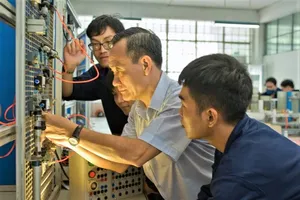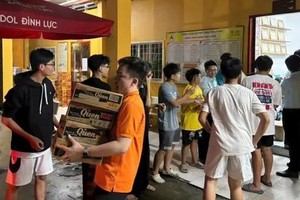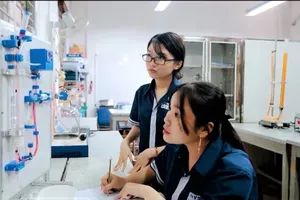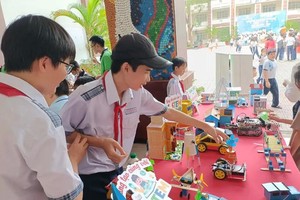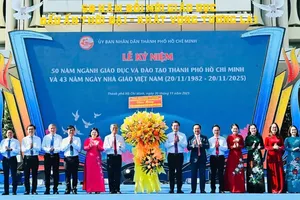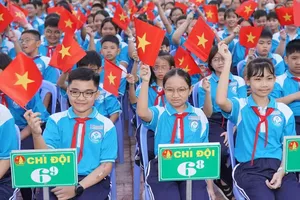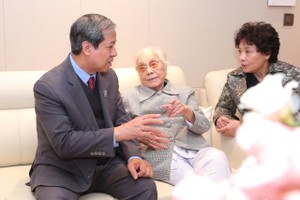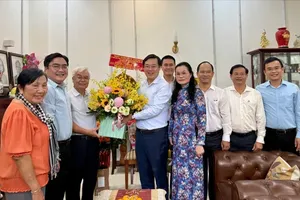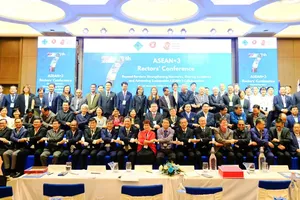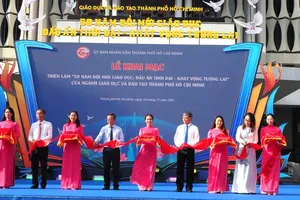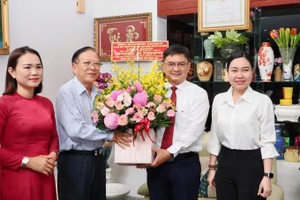
Vietnam National University – Hanoi (VNU-Hanoi), Vietnam National University – HCMC (VNU-HCMC), and Hanoi University of Science and Technology (HUST) recently inked a cooperation agreement to implement Resolution No.57. This event signifies a crucial advancement in establishing a robust collaborative foundation among the nation’s three largest universities.
Through this program, the participating educational institutions have committed to mobilizing their collective resources, personnel, and facilities to advance scientific research, translate modern technologies into practical applications, and enhance the quality of high-level human resource training to meet socio-economic development demands.
Accordingly, the three universities will collaborate closely in several key areas:
- training high-quality human resources, particularly at the postgraduate level;
- organizing joint training programs and rotational study schemes;
- granting dual/joint degrees;
- conducting research and development of core and strategic technologies such as artificial intelligence (AI), semiconductors, and new energy;
- establishing shared interdisciplinary laboratories;
- deploying models of affiliated “excellent research institutes”;
- developing a comprehensive digital ecosystem, including an interconnected digital university platform, digital libraries, and shared research databases;
- organizing international conferences;
- facilitating scholar exchanges;
- fostering international-standard scientific journals;
- strengthening industry linkages through collaborative training programs tailored to enterprise needs, product development, and commercialization.
Specifically, VNU-Hanoi is developing a 22.9-hectare Hi-tech and Innovation Park, featuring 110,000m² of construction floor area, envisioned as a nexus for world-class research groups and technology enterprises. By 2025, it plans to establish five key research institutes
- the Institute of Artificial Intelligence,
- the Institute of Semiconductor Technology,
- the Institute of Stem Cells,
- the Institute of Environmental Technology,
- the Institute of Quantum Research.
VNU-HCMC is investing VND700 billion (approximately US$27.5 million) in an innovation center designed to connect scientists, businesses, and investors. By 2030, the center aims to mobilize $10 million for startups, attract 15 R&D centers from major corporations, and train over 10,000 students and trainees in entrepreneurship and innovation. This center will concentrate on pivotal technologies like AI, digital transformation, semiconductors, biotechnology, and new energy.
Meanwhile, HUST will construct a cluster of Centers of Excellence for strategic technologies, encompassing data and AI, cybersecurity, chip technology, new energy, and space technology.
Deputy Minister of Education and Training Hoang Minh Son lauded the three-university collaboration as a “Triple Helix” model (State-academia-enterprise) driving breakthroughs in science, technology, and high-quality human resources. Selected for their robust research, STEM leadership, and impact potential, they will form a nucleus for a pilot model. This model aims to promote strategic tech R&D, attract top talent, and crucially mitigate “brain drain”, shaping Vietnam’s innovation future and skilled workforce development.
According to Assoc Prof Dr Vu Hai Quan, President of VNU-HCMC, in line with the action program for Resolution No.57, VNU-HCMC has submitted a formal proposal to the Government. This proposal outlines a program titled “Enhancing Training Capacity and Basic Scientific Research Integrated with Strategic Technology at VNU-HCMC to Achieve Advanced Levels, On Par with Regional and Global Standards for the Period 2025-2030, with a Vision to 2045.”
VNU-HCMC will coordinate with ministries and localities to implement program components for maximum efficacy, contributing to rapid national development. A key objective is transforming HCMC and the Southeastern region into a dynamic, high-growth hub as well as the nation’s foremost growth engine. This aligns with HCMC’s vision as a modern, creative metropolis, a magnet for global talent, experts, scientists, international financial institutions, and major corporations, fostering innovation and sustainable progress.
Following working sessions with VNU-Hanoi, VNU-HCMC, and the Vietnam Academy of Science and Technology, Deputy Head Huynh Thanh Dat of the Central Propaganda and Mass Mobilization Commission remarked that the Party Committees, leadership, and scientists at these three national leaders in training, scientific research, and innovation have all proactively developed action programs.
He expressed high expectations that Resolution No.57 will serve as a powerful impetus for developing and mastering science and technology, fostering innovation, and driving digital transformation.
These efforts aim to propel Vietnam towards becoming a prosperous, strong, and powerful developed nation in the coming era. However, he stressed that effectively achieving the objectives of Resolution No.57 necessitates a significant increase in resource investment – encompassing both physical infrastructure and human capital – for these three key institutions.
"Through discussions and careful consideration of the proposals and recommendations from educators and scientists, the Central Propaganda and Mass Mobilization Commission will compile and refine these insights to advise the Politburo and the Secretariat. This will aid in formulating specific, appropriate policies to enable these institutes and universities to effectively realize the ambitious goals set forth in Resolution No.57,” he concluded.





